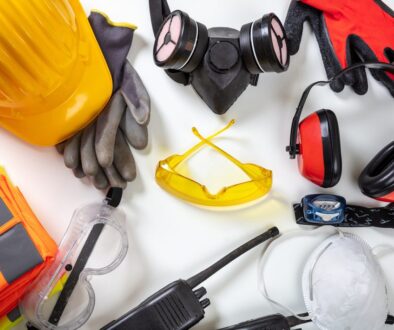Employee Protection: How to Run an Active Shooter Drill at Work
As an employer, one of your primary goals is to protect those who work for and with you. Sadly, one of the biggest safety concerns for modern employees is active shooters. Statistics show that 80% of active shooter incidents occur in the workplace, making this more of a risk than fires or other forms of workplace violence.
Despite statistics indicating the rise of active shooters in the workplace, Rave Mobile Safety wants to remind all business owners and employers that the best defense is to be prepared ahead of time to keep everyone safe. To navigate this all-too-common concern, it’s important to host frequent active shooter drills and to have a clear evacuation or lockdown plan for your location(s).
Is an active shooter drill necessary?
Because active shooter incidents are still statistically rare, many employers and incident managers claim the chances of encountering one in the workplace are less than the chances of other workplace incidences, such as a cyber attack.
While that is true (there are approximately 2,200 cyberattacks per day), our businesses are more prepared for attacks of a virtual variety. However, most businesses are unprepared or under-prepared for an active shooter scenario.
Additionally, many employers worry that active shooter drills will put undue stress on their employees, including triggering past trauma for some individuals or creating an anxious work environment.
But according to the FBI, 66.9% of mass shooter events end before emergency services can arrive. That’s why it’s in everyone’s best interest to be as prepared as possible. The goal is to mitigate harm to employees, guests, and customers before police and emergency services can arrive.
Preparing employees for an active shooter drill
For employees to feel as prepared as possible and to reduce emotional responses to an incident as scary as an active shooter, drills are critical.
Having a clear plan is important. Ensure the entire team is clear on the protocols and procedures well beforehand, and tell them precisely when the drill will occur.
Step 1: Have a detailed plan
Discuss the possibilities of an active shooter event with your entire team. Where are the places an assailant would enter? Where can you hide or escape?
Working together to develop this plan will not only put employees at ease but also ensure everyone on the team makes the same decisions should an active shooter situation arise.
Here are a few considerations to take into account:
- What are the weaknesses and entry points within your office or building?
- What are the escape points?
- How will you alert authorities to the presence of a shooter?
- What should employees be on the lookout for regarding suspicious persons and behaviors?
- Who is the point of contact during an emergency?
- How will you notify employees of an active shooter situation?
- If you have different buildings or different locations, how will you inform the right locations/buildings of a potential threat?
Step 2: Decide whether to run the drill on your own or with professional help
As active shooter events have increased, specialized companies dedicated to employee safety are now available for hire. These companies can help assess your active shooter response by putting employees in faux real-life scenarios.
If you do not hire a professional, you can run the drill on your own with a simulated shooter, portrayed by a member of management. It may also help to have multiple “shooters” to simulate a coordinated effort.
It’s important to have someone playing the role of the assailant so that everyone on your team or in your building can assess holes in the drill plan and can react in as similar an environment as possible.
Step 3: Review the response
Get together as a team to discuss the drill after it happens. Identify both what worked and what didn’t work. It can be a great idea to have a therapist or mental health professional accessible to your employees, as these drills are high-tension and can be traumatizing.
Reflect upon the efficiency of your response and ask yourself: Is there room for improvement? What can you and your employees do differently next time? How was your team’s (or location’s staff) communication? What elements were missing?
Minimizing the possibility of an emergency
Rave Mobile Safety has a suite of critical communication options for employers and businesses looking to reduce the possibility of an active shooter situation or another emergency — or at the very least to save lives in the case of such an event.
If you’re hoping to keep your employees and anyone else on your premises safe, be it students, patients, community members, etc., we want to help.
Rave Guardian allows employees to connect to 9-1-1 with just a push of a button, and can be accessed from their smartphone anytime. It’s the most accessible option to allow employees to notify teams and emergency services, regardless of whether they are at their desk or not.
Rave Alert can help your employees notify the company and building as a whole should an active shooter situation arise. As the leading FedRAMP authorized mass notification system, Rave Alert can quickly and reliably send a notification out to your entire company or building in just 3 clicks.
Rave Panic Button will act as your instant 9-1-1 call. In the event that an employees is unable to call the proper authorities, Rave Panic Button will connect with emergency personnel and alert them to the need for emergency and police response at that location.
Rave Link is a more cost-effective platform for companies looking to connect dispatch with their computers. This software will allow you to securely share data across multiple jurisdictions. While this software is not an emergency alert system, it can be extremely helpful in providing authorities with vital information.
Active shooter situations can happen at any moment, with no warning. And while the hope is that you will never encounter this situation within your workplace, it’s always best to be prepared should it happen. Rave Mobile Safety is here to ensure that the possibilities of serious injury and death are as minimal as possible, to keep everyone safe and protected.




